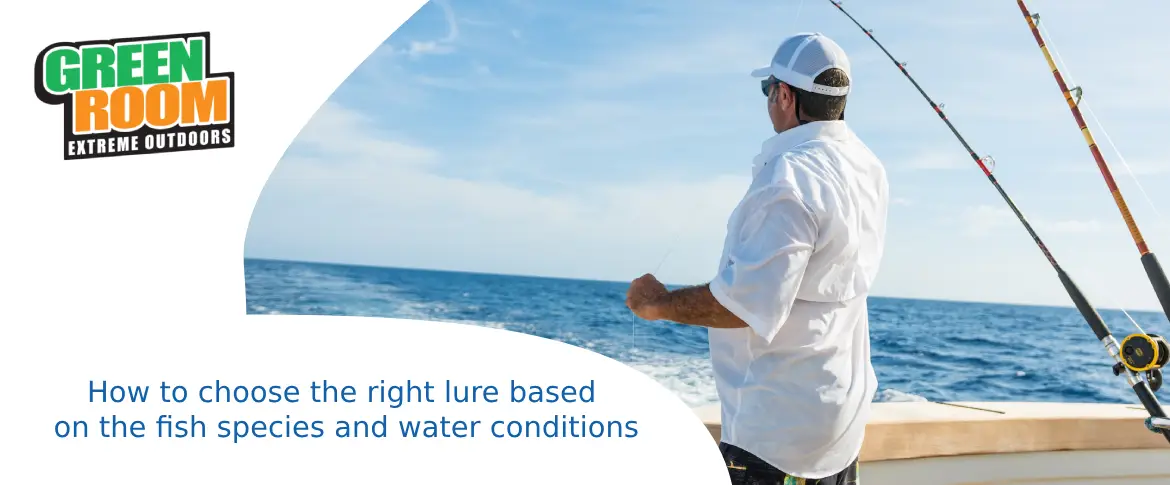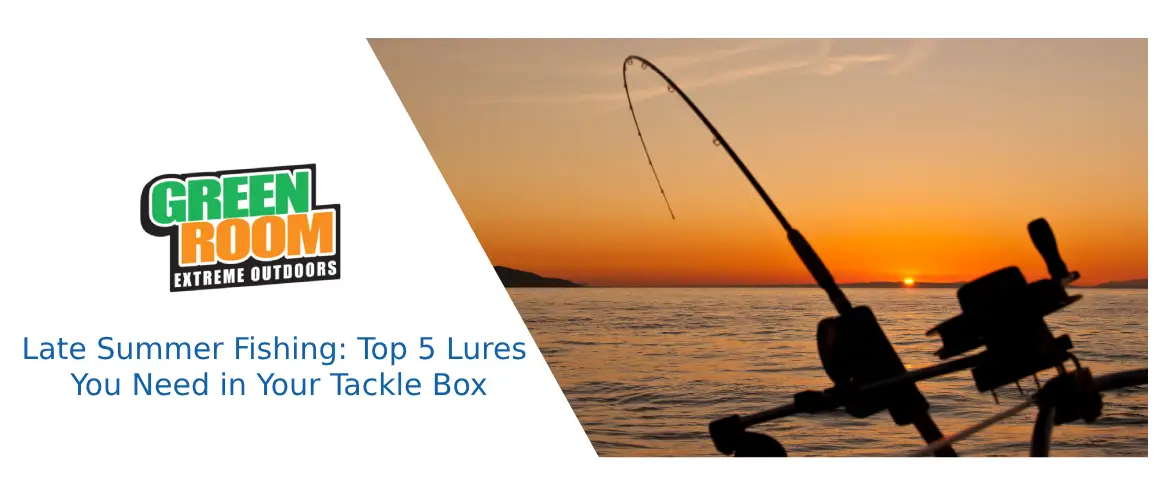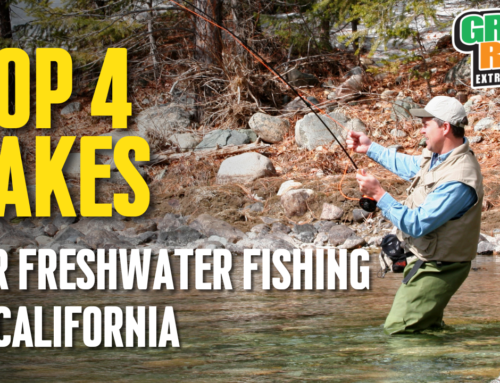Summer may be winding down, but that doesn’t mean it’s time to pack away your fishing gear just yet. Late summer can be a prime time for fishing, and having the right lures in your tackle box can make all the difference. Whether you’re targeting bass, trout, or panfish, there are a few go-to lures that every angler should have on hand.
In this article, we’ll highlight the top five lures you need in your tackle box for late summer fishing. From topwater plugs to soft plastics, these lures are sure to help you hook into some late-season fish and make the most of the remaining days of summer. So grab your gear, hit the water, and get ready to reel in some big catches with these must-have lures.
Understanding the behavior of fish in late summer
Before we get into the top five lures you need for late summer fishing, it’s important to understand the behavior of fish during this time of year. As the water temperatures rise, fish become more active and move into shallower water in search of food. This can make for some exciting fishing opportunities, but it also means that fish can be more selective about the lures they bite.
In late summer, fish are often looking for a quick and easy meal, which means that lures that resemble their prey and can be retrieved at a moderate to fast pace are often the most effective. It’s also important to pay attention to the weather and water conditions, as these factors can have a significant impact on fish behavior and feeding patterns.
Top 5 lures for late summer fishing
Now that we have a better understanding of late summer fish behavior, let’s take a closer look at the top five lures you need in your tackle box for this time of year.
- Crankbaits: Versatile and effective lure for late summer fishing. These lures come in a variety of shapes, sizes, and colors, and can be used to target a wide range of fish species. When fishing with crankbaits, it’s important to choose a lure that matches the depth of the water you’re fishing in, as well as the speed of your retrieve. Crankbaits are often most effective when retrieved at a moderate to fast pace, and can be used to cover a lot of water in a short amount of time.
- Topwater: Favorite among many anglers, and for good reason. These lures are designed to mimic the movement of insects or other prey on the water’s surface, and can be incredibly effective for targeting bass and other predatory fish. When using topwater lures in late summer, it’s important to pay attention to the weather and water conditions, as these factors can have a significant impact on fish behavior. On calm days with low wind, topwater lures can be especially effective for enticing fish to the surface.
- Jigs: A versatile and effective lure for late summer fishing. These lures come in a variety of shapes, sizes, and colors, and can be used to target a wide range of fish species. When fishing with jigs, it’s important to choose a lure that matches the type of cover you’re fishing in, as well as the speed of your retrieve. Jigs can be used to imitate a variety of prey, including crawfish, minnows, and other small baitfish.
- Spinnerbaits: Spinnerbaits are a great lure for targeting bass and other predatory fish in late summer. These lures consist of a metal blade that spins as it moves through the water, creating a flash and vibration that can attract fish from a distance. When fishing with spinnerbaits, it’s important to choose a lure that matches the type of cover you’re fishing in, as well as the speed of your retrieve. Spinnerbaits can be retrieved at a moderate to fast pace, and are often most effective when fished along the edges of weed beds or other types of cover.
- Soft Plastics: A staple in every angler’s tackle box, and for good reason. These lures come in a wide variety of shapes, sizes, and colors, and can be used to target a wide range of fish species. Soft plastics can be rigged in a variety of ways, including Texas rigged, Carolina rigged, and drop shot rigged, and can be fished at a variety of depths and speeds. When using soft plastics in late summer, it’s important to pay attention to the type of cover you’re fishing in, as well as the speed of your retrieve.
How to choose the right lure based on the fish species and water conditions
Now that we’ve covered the top five lures you need in your tackle box for late summer fishing, let’s take a closer look at how to choose the right lure based on the fish species and water conditions you’re fishing in.
When targeting bass, crankbaits, topwater lures, and spinnerbaits can be especially effective in late summer, as these lures can be used to cover a lot of water quickly and can mimic the movement of the fish’s prey. When targeting trout or panfish, jigs and soft plastics can be effective when fished near the bottom or around cover.
When choosing a lure, it’s also important to pay attention to the water conditions you’re fishing in. In clear water, lures that mimic the fish’s prey and have a natural look and movement can be more effective, while in murky water, lures with a lot of vibration and flash can be more effective at attracting fish.

Tips for using each lure effectively
Now that you have a better understanding of how to choose the right lure based on the fish species and water conditions, let’s take a closer look at some tips for using each lure effectively.
When using crankbaits, it’s important to pay attention to the depth of the water you’re fishing in, as well as the speed of your retrieve. Different types of crankbaits are designed to dive to different depths, and it’s important to choose a lure that matches the depth of the water you’re fishing in. When retrieving a crankbait, it’s often effective to vary the speed of your retrieve and to pause the lure periodically, as this can trigger a strike.
When using topwater lures, it’s important to pay attention to the weather and water conditions. On calm days with low wind, topwater lures can be especially effective for enticing fish to the surface. When fishing with topwater lures, it’s important to use a steady, rhythmic retrieve and to pause the lure periodically to create a realistic presentation.
When using jigs, it’s important to pay attention to the type of cover you’re fishing in, as well as the speed of your retrieve. Jigs can be used to imitate a variety of prey, including crawfish, minnows, and other small baitfish. When fishing with jigs, it’s often effective to use a slow, methodical retrieve and to bounce the lure along the bottom to mimic the movement of the prey.
When using spinnerbaits, it’s important to pay attention to the type of cover you’re fishing in, as well as the speed of your retrieve. Spinnerbaits can be retrieved at a moderate to fast pace, and are often most effective when fished along the edges of weed beds or other types of cover. When retrieving a spinnerbait, it’s often effective to vary the speed of your retrieve and to pause the lure periodically to create a more realistic presentation.
When using soft plastics, it’s important to pay attention to the type of cover you’re fishing in, as well as the speed of your retrieve. Soft plastics can be rigged in a variety of ways, including Texas rigged, Carolina rigged, and drop shot rigged, and can be fished at a variety of depths and speeds. When fishing with soft plastics, it’s often effective to use a slow, methodical retrieve and to vary the speed of your retrieve to create a more realistic presentation.
Rigging techniques for each lure
In addition to using the right lure and using it effectively, it’s also important to use the right rigging technique for each lure.
When rigging a crankbait, it’s important to match the size of the lure to the size of the fish you’re targeting. It’s also important to use a rod with a medium to fast action, as this will help you to feel the lure’s action and detect strikes.
When rigging a topwater lure, it’s important to use a rod with a slow to medium action, as this will allow you to make accurate casts and work the lure effectively. It’s also important to use a line with a low visibility color, as this will help to prevent fish from spooking.
When rigging a jig, it’s important to match the weight of the lure to the depth of the water you’re fishing in. It’s also important to use a rod with a medium to fast action, as this will help you to detect strikes and set the hook effectively.
When rigging a spinnerbait, it’s important to match the size and color of the lure to the type of cover you’re fishing in. It’s also important to use a rod with a medium to fast action, as this will help you to feel the lure’s action and detect strikes.
When rigging a soft plastic, it’s important to choose the right rigging technique for the type of lure you’re using and the fish species you’re targeting. Common rigging techniques include Texas rigged, Carolina rigged, and drop shot rigged.
Additional gear you may need for late summer fishing
In addition to the right lures and rigging techniques, there are a few additional pieces of gear you may need for late summer fishing.
First and foremost, it’s important to have a quality fishing rod and reel that is appropriate for the type of fishing you’ll be doing. It’s also important to have a variety of fishing line options on hand, as different types of lines can be more effective depending on the water conditions and the type of fish you’re targeting.
Other important pieces of gear to consider include polarized sunglasses, a hat to protect you from the sun, and sunscreen to protect your skin from harmful UV rays. It’s also important to have a first aid kit on hand in case of any accidents or injuries.
Safety tips for fishing during hot weather
Fishing during hot weather can be a lot of fun, but it’s important to take the necessary precautions to stay safe. Here are a few key safety tips to keep in mind:
- Stay hydrated: Be sure to drink plenty of water throughout the day to stay hydrated and prevent dehydration.
- Wear appropriate clothing: Wear light-colored, breathable clothing that will help to keep you cool and protect you from the sun.
- Take breaks: Take regular breaks throughout the day to rest and cool off.
- Know the signs of heat exhaustion: Familiarize yourself with the signs of heat exhaustion, such as dizziness, nausea, and fatigue, and take action if you experience any of these symptoms.
Best places to go late summer fishing
Now that you have the right lures, gear, and safety precautions in place, it’s time to hit the water! Here are a few of the best places to go late summer fishing:
- Lakes: Lakes can be a great place to go late summer fishing, as they often have cooler water temperatures and plenty of cover for fish to hide in.
- Rivers: Rivers can be a great place to go late summer fishing, as they often have a lot of structure and current that can concentrate fish in certain areas.
- Ponds: Ponds can be a great place to go late summer fishing, as they often have a lot of vegetation and cover that can attract fish.
Conclusion and final thoughts
Late summer fishing can be a lot of fun, and having the right lures and gear can make all the difference. By understanding the behavior of fish in late summer, choosing the right lure based on the fish species and water conditions, and using the right rigging techniques, you can increase your chances of hooking into some big catches. Remember to stay safe and hydrated, and to take breaks throughout the day to rest and cool off. With the right preparation and a little bit of luck, you’re sure to have a great time late summer fishing.








